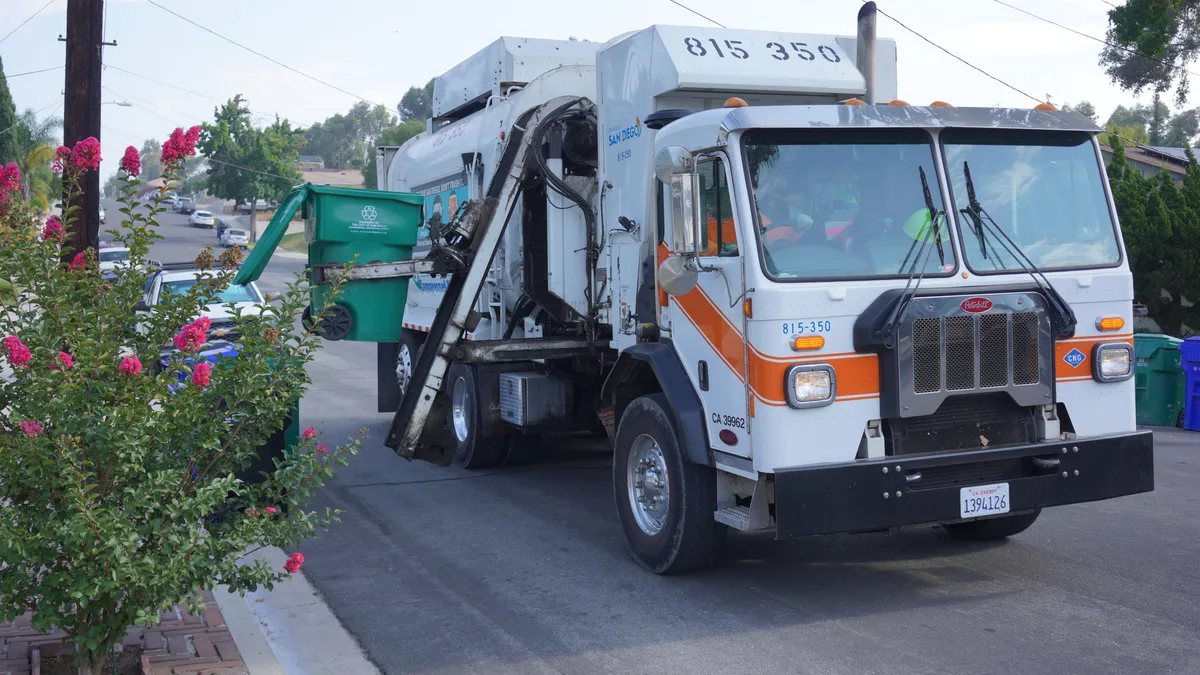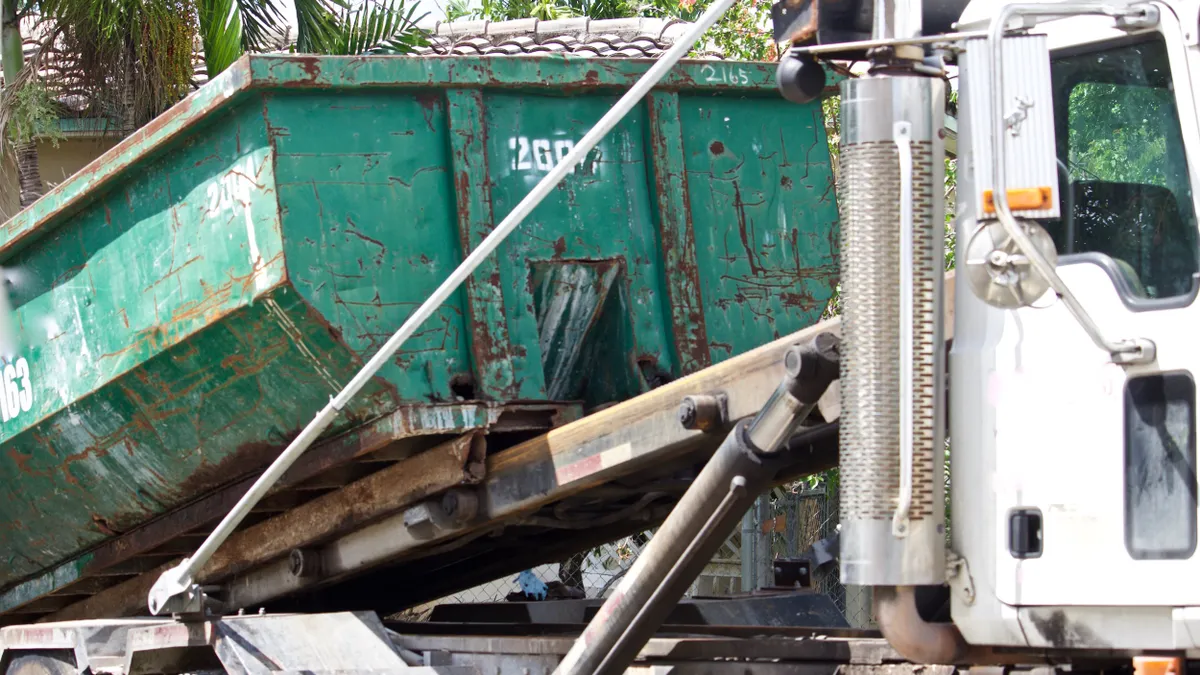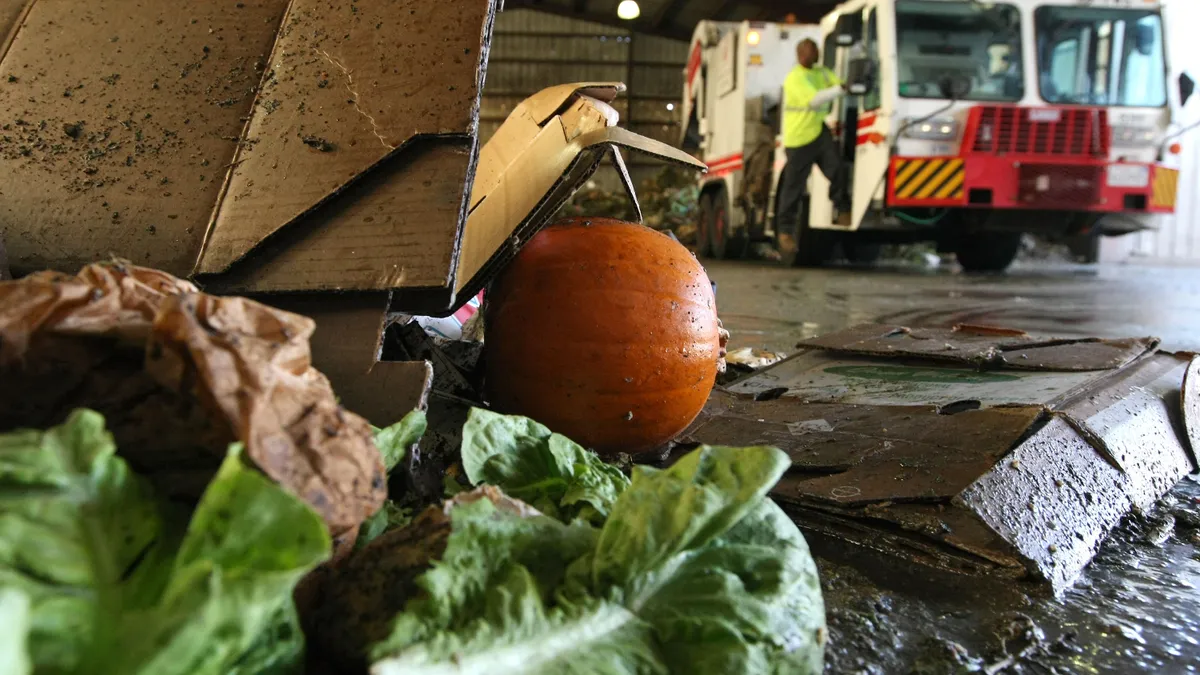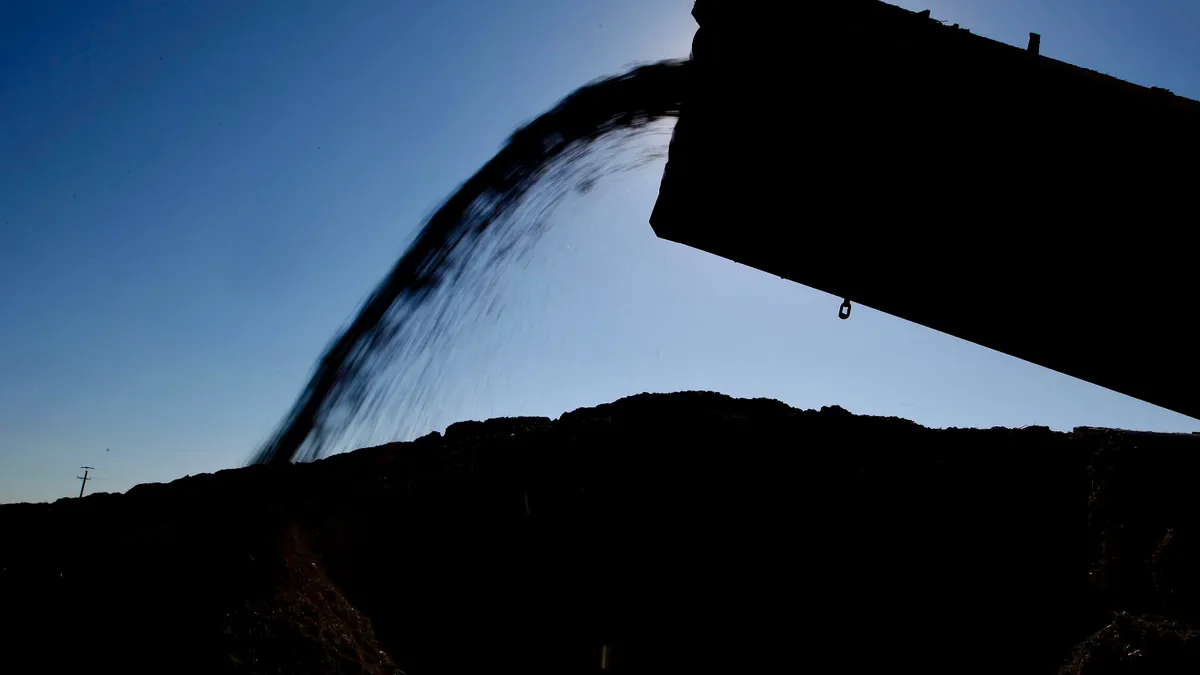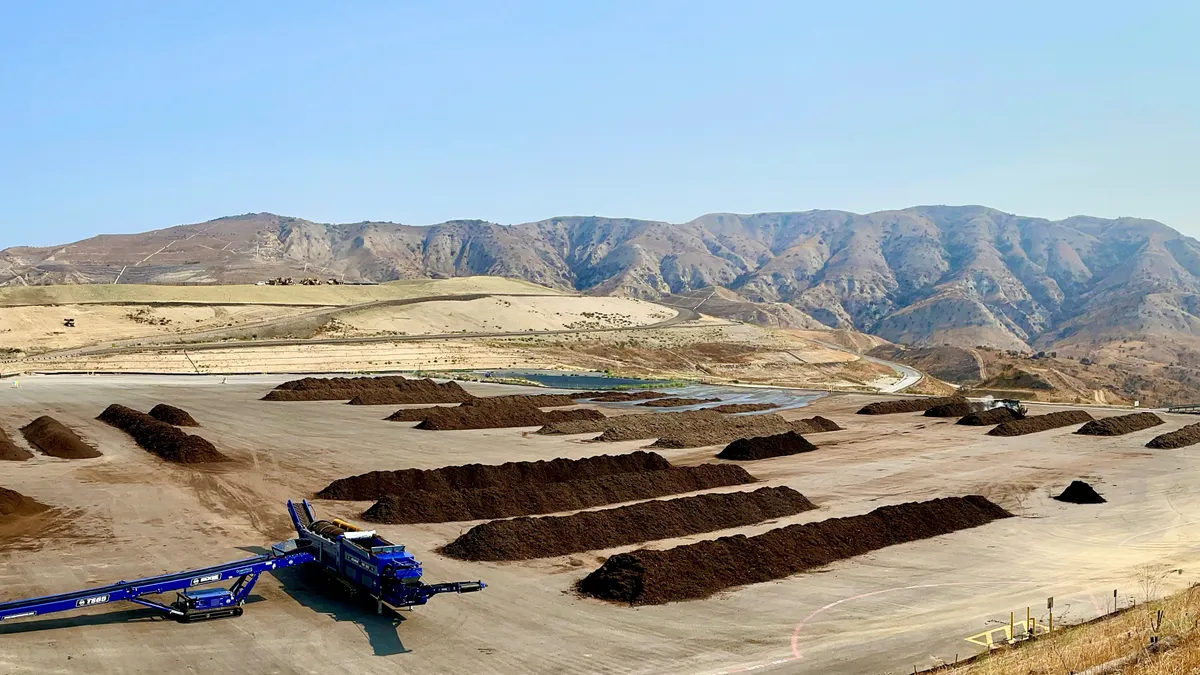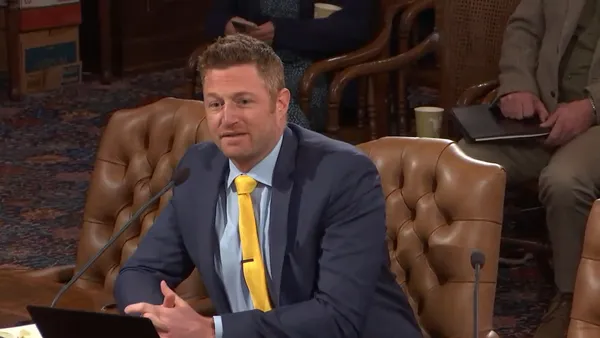Editor’s note: This is the fourth in a multipart series exploring the market effects of California’s sweeping organic waste reduction law, SB 1383.
As California’s local governments scale up organics collection and meet all the other requirements of the state’s new mandate, SB 1383, each one is working through unique logistical and financial considerations.
While many jurisdictions have taken the first step of passing or updating local ordinances to comply with the law, their readiness for collection varies greatly. In Northern California, particularly the Bay Area, some jurisdictions have had food and green waste collection for many years. Parts of Southern California are seen as having a greater task ahead to scale up organics collection and processing infrastructure, in part due to how the region’s landfills have evolved: More of them are publicly owned, which has kept tip fees lower, but it also has not created as many incentives to reduce landfilling. Los Angeles, San Diego and other Southern California jurisdictions are now in the midst of significant program rollouts in the coming months.
Local officials in three areas, ranging from sparsely populated desert regions to some of the state’s largest cities, offer a snapshot of what this process has looked like for each of them over the past year.
Los Angeles
The state’s biggest city may be one of the more notable examples of a large-scale organics collection rollout, as it works to provide access to the more than 750,000 residential customers its municipal crews serve.
In May 2019, LA Sanitation & Environment launched a pilot for 18,000 households to co-collect food waste and yard waste, providing kitchen pails to assist in the process. While that continued during the pandemic, and the city saw at least 30% of households consistently participating, further expansion was put on hold. Now, the agency will expand that program to a total of 40,000 households in July and the remainder by January.
Alex Helou, an assistant director for solid resources program development at LASAN, noted this is just one of multiple options for residents interested in managing their food waste.
“You can put it in your green bin, you can put it down the sink or you can take it to a farmers market,” he said. “We’re trying to make it as convenient as possible.”
In addition to providing the expanded green bin option, the agency is working to support at-home composting, as an estimated 540,000 stops LASAN serves are single-family homes. “A lot of people are opting for backyard composting,” Helou said.
LASAN also provided new in-sink disposals to certain residents, with city-funded plumbing support on standby 24/7 for the first year. It has not funded further expansion of that program due to varying costs and participation levels. The city is also working to expand drop-off options at area farmers markets in the coming months, working with nonprofit composters to potentially offer dozens of free locations.
For customers in the recycLA franchise system, which includes commercial accounts and larger multifamily buildings, the full rollout of organics collection was delayed during the pandemic but is back on track. Helou noted that recycLA service providers have a contractual incentive to show reductions in waste disposal ahead of a 2025 target. Other areas for growth in organics collection include the Los Angeles International Airport and Los Angeles City Hall as foot traffic increases in both locations following early pandemic disruptions.
Helou said Los Angeles was in a slightly better position than some jurisdictions because it already accepts different types of organic waste in its green bin alongside yard waste, but adding food to the mix on a large scale is still complex. An existing processing arrangement with Recology’s Blossom Valley organics facility covers composting for the next phase of expansion in July, but after that the city will need another destination and is reviewing responses to a recent RFP.
The city doesn’t expect to consider any mixed waste collection or processing approaches, Helou said, and it specifically prohibited that approach in recycLA “because we were looking for the highest and best use.”
Speaking broadly, he said the best measure of success for the city’s organics recycling plans will be whether they help make a significant dent in landfill volumes as part of the city’s upcoming zero waste targets, and the shift could be sizable.
“We need [recyclers] who can process up to 2,700 tons a day of organic material,” said Helou, based on an estimated 1,000 ton-per-day increase after the full collection rollout.
Processing infrastructure expansion isn’t just a factor for the city. Los Angeles County is also expected to potentially need a significant expansion in capacity, with one official estimating that there could be enough volume for as many as 12 new anaerobic digestion projects. In another example of what that means for local jurisdictions, nearby Long Beach recently said it’s still working to identify sufficient processing capacity as one potential site is in high demand.
San Diego
California’s second-largest city faces a similar need to scale up quickly. It currently offers green waste collection to about two-thirds of homes, but not food scrap collection. Commercial and multifamily service is covered under franchise contracts with local haulers. City-run residential service is currently offered every other week, with many customers providing their own carts or bundling up material. Soon that will change — and the changes will come with a hefty price tag.
“Some of the significant costs that we’ll have with 1383 is we have to expand to go citywide, we have to have containers for all of the customers, then we also have to add food scraps,” said Ken Prue, deputy director for the city’s Environmental Services Department, noting one further complexity: “Since we have no rates, we’re not able to pass anything along."
Due to a 1919 people’s ordinance, San Diego can’t directly charge residents for this service, unlike the vast majority of jurisdictions in the state. Efforts to change that ordinance have gained traction, and a ballot initiative to do so could be presented to voters in November, but the estimated $30 million cost of new bins will need to be addressed in the meantime.
Prue said the city considers source-separated, three-bin collection its only real choice. The material will be processed in a city-owned compost site at its Miramar landfill. That site, which uses an aerated static pile system for commercial material, has additional capacity for residential material. While the costs will be sizable, city officials said they’re looking forward to further reducing methane emissions from the landfill and helping address local input.
“It fits with our goals — with our zero waste plan and our climate action plan — and it’s something that a lot of residents have really been requesting and advocating for for some time,” said Prue. “Previously we have not been able to identify funding, so now with the state mandates, it’s something we have to do.”
San Bernardino County
San Bernardino County’s desert and mountain communities have not been collecting green waste or food scraps from their residents, and its arid climate makes doing so more challenging.
John Davis, administrator of the Mojave Desert and Mountain Recycling Authority, said green waste constitutes less than 10% of the stream for member jurisdictions. The authority’s geographic scope — it covers a territory nearly the size of Connecticut — as well as the low population density and limited budgets in many areas meant it just didn’t make sense to offer collection for the material. At least two local government members of the joint powers authority have received exemption waivers from CalRecycle so far: one due to its high elevation, which increases the risk that food waste bins will attract bears to residential areas, and the other for low population.
Certain members of the authority are now sending commercial organics to a compost site run by Burrtec Waste Industries in Victor Valley, which handles hauling for many member jurisdictions, but it’s not logistically feasible for all jurisdictions in the authority to use that site. Davis said members had been reviewing a variety of options, but many ended up being too expensive.
Even with a smaller amount of material going into the facility, “the capital costs are still [largely] the same,” said Davis.
Last year, the authority considered whether some form of mixed waste processing for everything but recyclables could make sense. Initial tests showed that the 50% recovery rate the state requires for “high diversion facilities” using a mixed waste system was likely achievable, and even higher recovery rates seemed possible. However, ultimately the transportation costs involved with moving material long distances among processing facilities, compost sites and landfills proved too high. The authority also considered building its own mixed waste processing line, but it ruled that out after assessing equipment delays and steel costs.
“Maybe it would work, but it didn’t pencil out at the end of the day,” said Davis. The focus for members now, he said, is finalizing new rates, adapting to overall SB 1383 requirements and — for the jurisdictions that have processing destinations in place — rolling out organics collection in the coming months. Barstow is set to be the first local city to take this step, as it starts distributing new carts in collaboration with Burrtec for a program starting in July.
“The cities near the compost facility are moving pretty expeditiously, the others just have to find capacity.”
Stay tuned for Part 5, which looks to the Bay Area for lessons learned and limitations discovered over many years of organics recycling.



